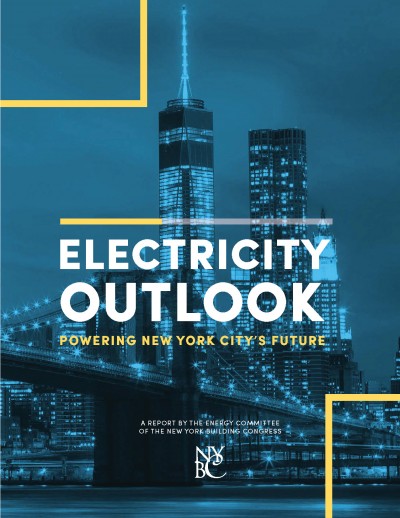
Electricity Outlook 2017: Powering New York City's Future
Executive Summary
Despite the pressures imposed by summers that have become increasingly hotter year over year, New York City has reliably met the electricity demands of its growing economy, population, and built environment. Thanks to the introduction of more energy efficient products and other conservation measures, the city has actually experienced a slight decline in annual electricity consumption since 2011. Over the past six years, an estimated 350 MW have been saved through conservation measures.
The city's ability to meet peak summer demand is also largely attributable to an increase in the overall electricity supply. During the first half of this decade, New York City has added 1,205 MW in generation and 660 MW in transmission capacity. Another 83 MW has been added via the increased use of solar energy. The supply of natural gas, which fuels nearly all of the city's electricity generation, has likewise increased through the introduction of new pipelines and investments that have boosted capacity on existing lines.
Even though these energy infrastructure investments have been substantial, more investment will be needed in order to continue to meet New York City's electricity demand in the coming years. NYISO is forecasting that summer peak demand will rise consistently through 2027, when it reaches 12,788 MW, or 1,798 MW above the actual 2016 peak.
Adding to the urgency of the situation is the announced closure of Indian Point's two nuclear power plants, which provide 2,069 MW for Westchester County and New York City, or approximately 25 percent of the region's energy supply.
Presently, there are no plans for additional generation plants within New York City. Nor are there firm plans for additional transmission capacity to the city.
The only near-term generation facilities under construction or in planning stages are outside of New York City. A new 650 MW natural gas plant, CPV Valley in Orange County, is targeted for completion in 2018; and a recently announced 1,100 MW natural gas plant, Cricket Valley, in Dutchess County, is estimated for completion in mid-2019.
To benefit from these new sources of electricity supply, New York City will need new and improved transmission capacity. The same is true for the abundant supply of electricity – from hydropower, wind power, and utility-scale solar installations – that is and will be produced in Upstate and Western New York and in Canada. While NYISO recognizes the need for improved transmission connections from Upstate to Southeast New York, the Lower Hudson Valley, and New York City, firm plans for this investment are not yet in place.
Two major proposed transmission projects do offer promise of a significant increase of electricity to New York City by or before 2027. The Champlain Hudson Power Express project, a 330-mile HVDC cable submerged under Lake Champlain and the Hudson River, could begin construction in 2017 and deliver 1,000 MW of renewable energy from Québec to Astoria, Queens by late 2021. A second project that is in active planning and the early permitting stage, the Empire State Connector, would run a 260-mile HVDC submerged cable below the Erie Canal and the Hudson River. If built, it could deliver 1,000 MW from renewable sources to either Brooklyn or the Bronx.
These or similar transmission projects, along with plans for additional investment in existing transmission capacity, are essential to assuring that New York City has an ample supply of electricity throughout the next decade.
New natural gas pipeline capacity with direct connection to New York City and Westchester County also will be necessary to meet expected growth in demand. Almost all in-city electricity generation now comes from natural gas burning plants, which has led to a 25 percent increase in demand for natural gas in Con Edison's service territory over the past six years.
Four natural gas pipeline projects are currently at the final permitting or early proposal stage. Three of those projects - the Millennium Pipeline, PennEast Pipeline, and Mountain Valley Pipeline projects - would provide greater diversity of supply to the region as well as better price differentials as soon as 2018. The fourth, Transco's Northeast Supply Enhancement project, would bring added natural gas directly into New York City, where the demand exists and is growing.
The bottom line is that meeting New York City's electricity demand through 2027 will require a multipronged strategy incorporating energy efficiency and conservation measures, increased transmission and natural gas pipeline capacity, and enhanced investment in renewables, as well as new storage and supergrid technologies. As the recommendations in this report suggest, all stakeholders – government, utilities, and commercial and residential consumers – will play an important role in bringing that strategy to fruition.



